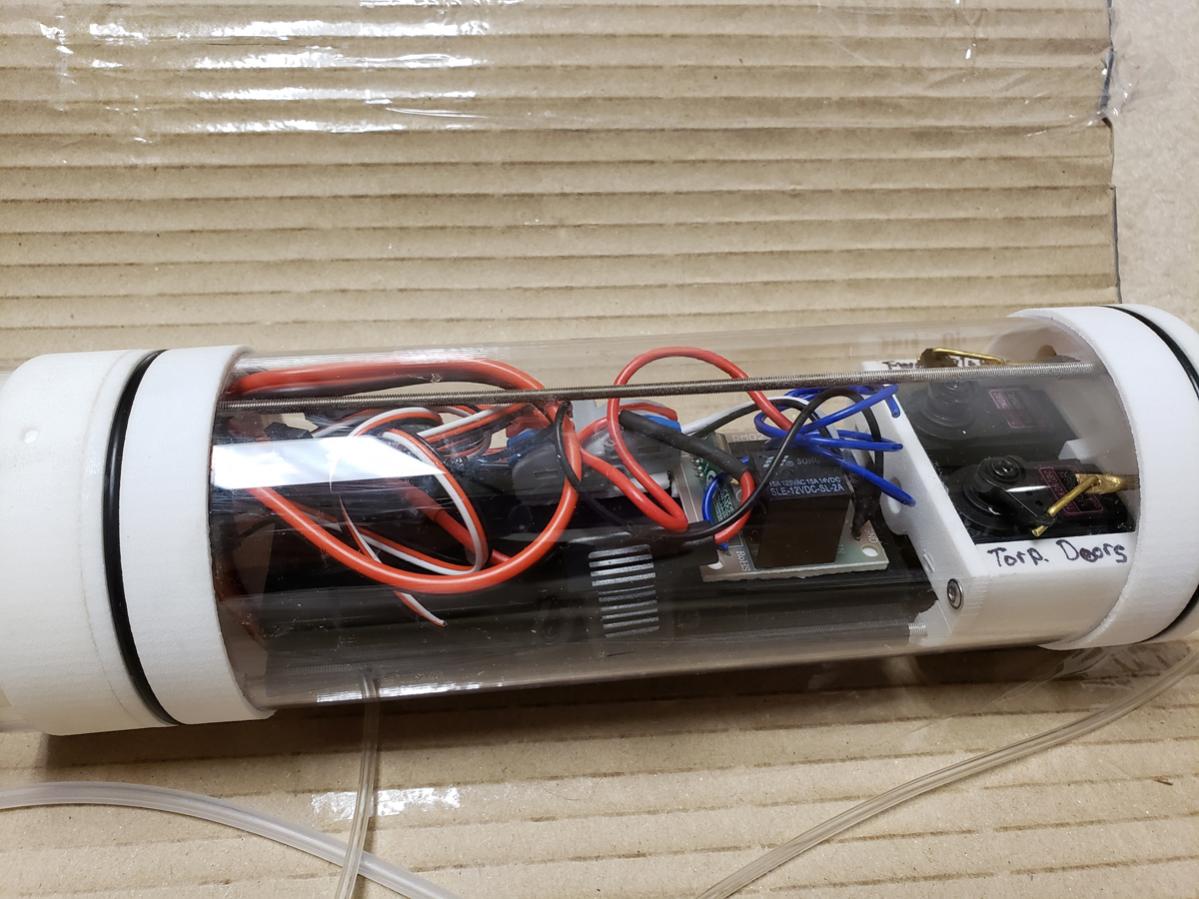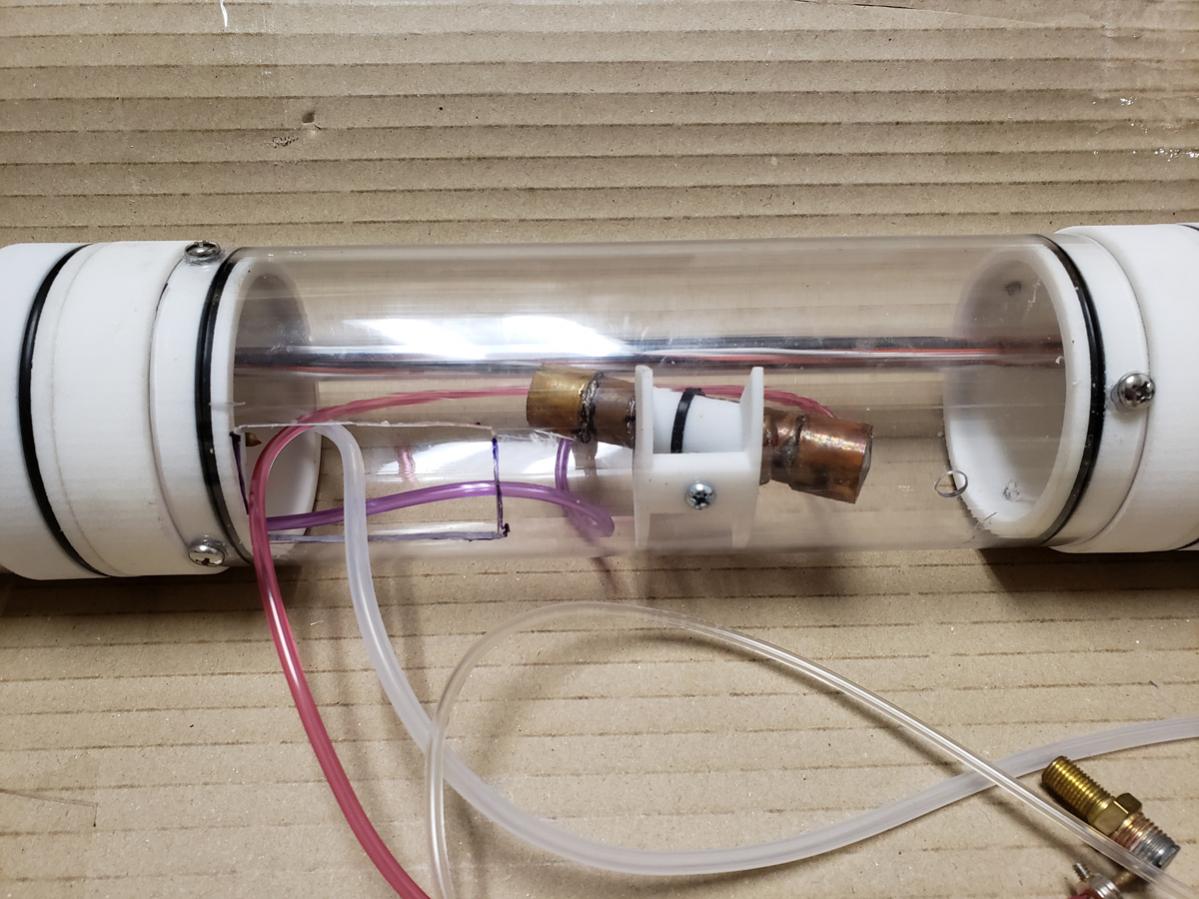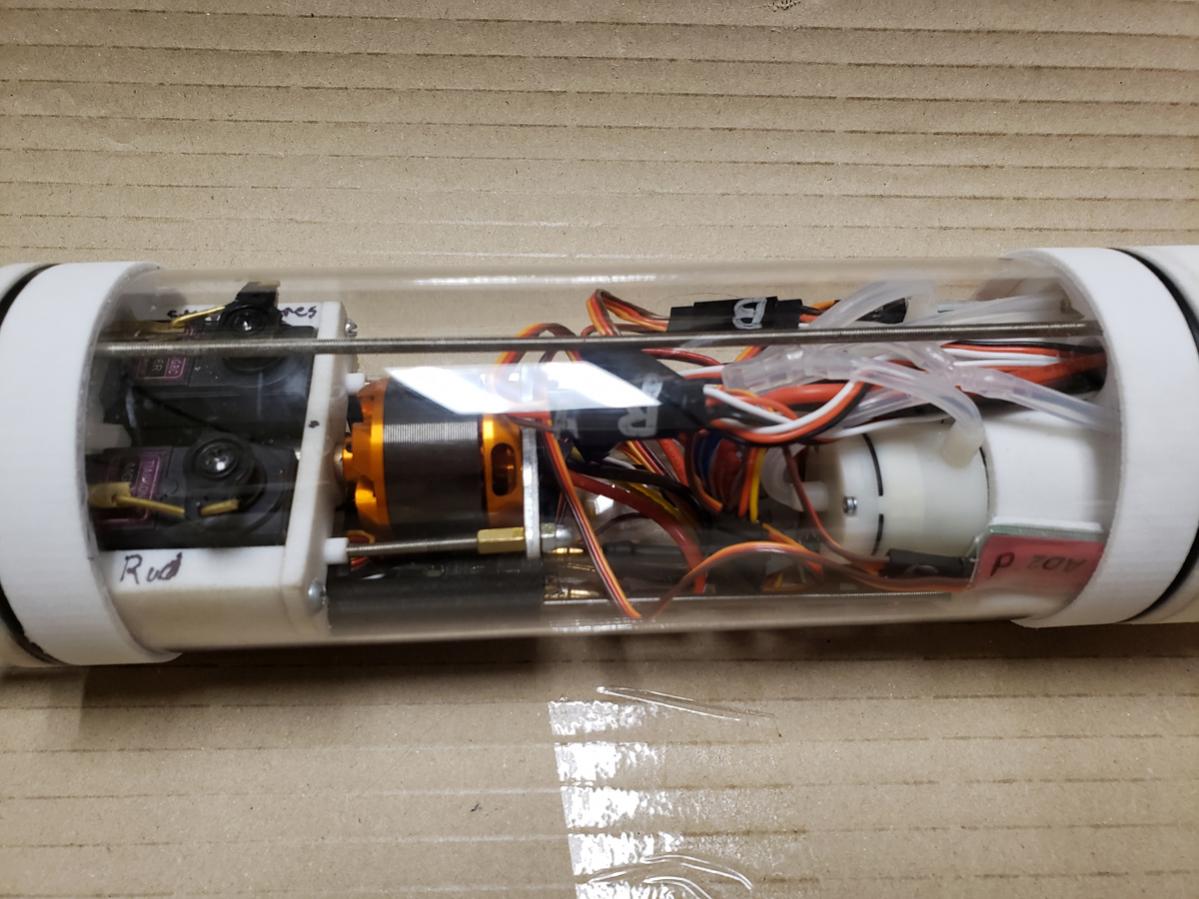So, for anyone who isn't already familiar with this stuff, this is what the insides of most static diving RC submarines look like. Static, as opposed to Dynamic diving, means that the dive system is capable of allowing the submarine to dive without needing to move forward or backward and pushing itself down using the dive planes. Static systems dive by changing the overall buoyancy of the boat, so static diving systems tend to be more complex than dynamic systems.

This is the WTC or Watertight Cylinder containing all the electronics, batteries, radio gear, motors, servos, etc. to operate the sub. Mine is a 3" diameter tube with an 8" long ballast tank. If you do the math it works out to 56.55 cubic inches of volume or 2.039 pounds of water at 70 degrees. At least until I become proficient at operating the sub safely I will keep it set up to only flood to neutral buoyancy, which means I can operate pretty much normally using the dive planes (along with forward motion) to dive and surface before blowing the tanks. Later I may set it to allow for some negative buoyancy to allow quicker dives and diving in place... we'll see how it goes.
This is the forward section of the WTC which contains forward dive plane and torpedo door servos as well as the radio receiver, battery, a battery and radio signal monitor board, and wireless on/off switch for the sub that uses a key fob to activate.

This is the center section which is the ballast tank. The brass cylinder in the middle is a canister that can be filled with compressed airbrush propellant to emergency blow the tank. The tank vent is a small brass tube on top with a valve which is activated with a servo motor to allow air out of the tank and for the tank to flood. The large opening on the bottom of the tank allows water to enter as well as providing maintenance access. You can see the wiring for main power, servo motor, and engine controls running through an airtight tube that runs all the way through the ballast tank at the top. The airtight tube also allows the pressure inside the forward and aft WTC compartments to equalize.

And this is the aft section of the WTC containing the main drive motor and ESC, aft dive plane servo, rudder servo, two air pumps for blowing the ballast tank, and an electronic auto-leveling board connected to the aft dive planes.

I have already done a bit of setup on the WTC, mostly involving running wires and connecting servos and the subsystem control boards.
And last is a view of tha aft end of the WTC showing the control pushrods and gearbox to drive the twin propellers. The brass filler valve on the hose to the right allows me to fill the emergency ballast blow tank with airbrush propellant. The other two hoses are for the ballast air intake and pressurization testing.

I have been building various types of RC vehicles for many years and this one is the most complex system-wise I have done so far. There's a lot of stuff to set up, program, tweak, and maintain. Much more than an RC airplane or tank.
More to come on this subject as the work progresses...